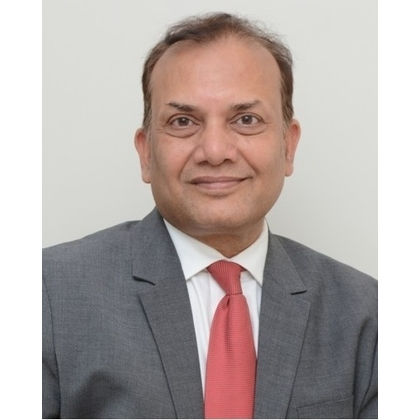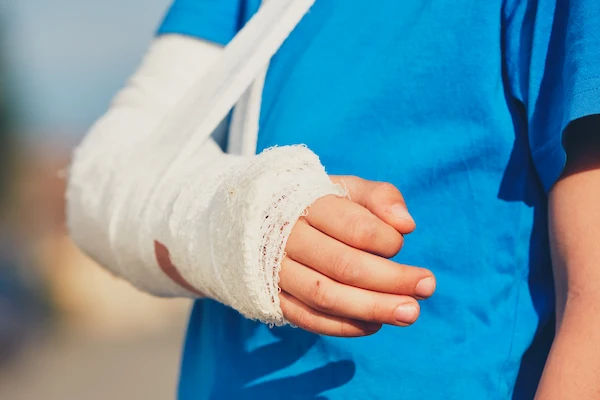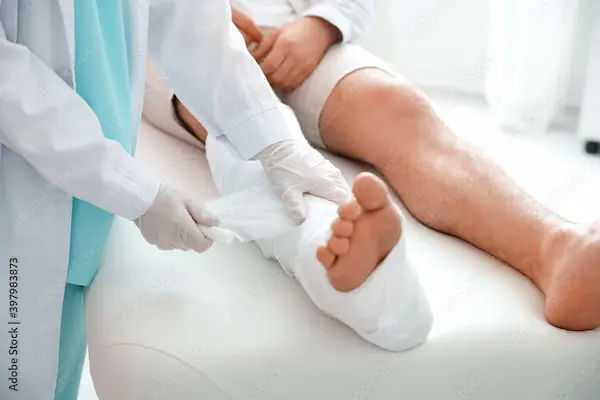Guide to Short Stay Surgery Orthopaedic
Learn about short-stay orthopaedic surgery, its benefits, and how it helps patients recover quickly and safely.


Introduction
Imagine having a necessary orthopaedic surgery, like a knee arthroscopy or rotator cuff repair, and being able to recover in the comfort of your own home just hours later. This is the reality of short stay surgery, a transformative approach revolutionising orthopaedic care. Also known as outpatient or ambulatory surgery, this model moves many procedures that once required multi-day hospital stays into specialised centres where patients are discharged on the same day or after a single night's observation. Driven by advances in minimally invasive surgical techniques, improved anaesthesia, and structured recovery protocols, short stay orthopaedic surgery prioritises patient comfort, safety, and efficiency. This guide will walk you through everything you need to know, from the profound benefits and eligibility criteria to a detailed timeline of what to expect. Our goal is to empower you with the knowledge to have an informed discussion with your doctor about whether this modern path to healing is right for you.
What Exactly is Short Stay Orthopaedic Surgery?
Short stay orthopaedic surgery refers to planned surgical procedures on bones, joints, muscles, or tendons that do not require an extended hospital admission. The entire process from admission and surgery to initial recovery and discharge is typically completed within a 12 to 23-hour window. These procedures are performed in dedicated ambulatory surgery centers (ASCs) or specific units within hospitals designed for efficient, patient-focused care.
The feasibility of this approach is rooted in three key advancements:
1. Minimally Invasive Techniques: Surgeons now use smaller incisions, specialised cameras (arthroscopes), and precision instruments. This causes less trauma to tissues, resulting in reduced pain, bleeding, and swelling.
2. Improved Anaesthesia: The development of regional anaesthesia (like nerve blocks that numb only the surgical limb) and better short-acting general anaesthetics allows patients to wake up faster with fewer side effects like nausea and drowsiness.
3. Enhanced Recovery After Surgery (ERAS) Protocols: These are standardised, evidence-based pathways that optimise every stage of care, from pre-operative nutrition and hydration to multi-modal pain management, to accelerate recovery.
Short Stay vs. Traditional Inpatient Surgery: What's the Difference?
The primary difference lies in the recovery model. Traditional inpatient surgery involves a stay of several days in a hospital bed, where nursing staff manage pain, monitor vitals, and assist with initial mobility. In contrast, short stay surgery shifts the responsibility for the early recovery phase to the patient and their support system at home, but with thorough preparation and support.
Traditional: Longer hospital stay, higher exposure to hospital environments, often more passive initial recovery.
Short Stay: Significantly shorter facility time, recovery begins actively almost immediately in a familiar setting, requiring greater patient engagement and preparation.
This shift is not about providing less care; it's about providing the right care in the right setting, which for many patients, leads to better outcomes.
Consult an Orthopaedic Surgeon for the best advice
The Significant Benefits of Choosing a Short Stay Procedure
The move towards short stay orthopaedic surgery is driven by a multitude of advantages for patients, which also contribute to the efficiency of the broader healthcare system.
Reduced Risk of Hospital-Acquired Infections
Hospitals, despite being sterile environments for surgery, are hubs for various bacteria and viruses. Longer stays increase the risk of contracting infections like MRSA (Methicillin-resistant Staphylococcus aureus) or C. diff (Clostridioides difficile). By minimising time spent in the hospital, outpatient orthopaedic procedures significantly lower this risk. A study published in the Journal of Arthroplasty found that outpatient joint replacement patients had a markedly lower incidence of post-operative infections compared to their inpatient counterparts.
Faster Recovery in a Familiar Environment
Psychological comfort plays a huge role in physical recovery. Being in your own home, sleeping in your own bed, and having meals prepared to your liking can reduce stress and promote healing. Patients often report feeling more in control of their recovery process. Furthermore, mobilising early as encouraged in short stay models is crucial for regaining strength and preventing complications like blood clots. The familiar home environment can make this feel less daunting than navigating a hospital ward.
Cost-Effectiveness for Patients and Healthcare Systems
Short stay surgery is inherently less expensive. It reduces or eliminates costs associated with hospital room charges, in-patient pharmacy markups, and certain facility fees. For patients, this can mean lower out-of-pocket expenses. For the healthcare system, it frees up valuable hospital beds and staff resources for more critical cases, improving overall efficiency. This makes quality orthopaedic care more accessible to a larger number of people.
Are You a Candidate for Outpatient Orthopaedic Surgery?
Not every patient is an ideal candidate for a short stay orthopaedic procedure. The decision is a collaborative one made by your surgical team based on a comprehensive assessment.
Medical Criteria Your Surgeon Will Consider
Ideal candidates are generally in good health aside from their orthopaedic issue. Key factors include:
- Body Mass Index (BMI): A BMI within a healthy range is preferred, as obesity can increase surgical and anaesthetic risks.
- Co-morbidities: Well-controlled conditions like diabetes or mild hypertension may be acceptable, but significant, uncontrolled heart, lung, or kidney disease often disqualifies a patient.
- Age: While age is not a sole determinant, younger, healthier patients typically tolerate outpatient surgery better.
However, active older adults can be excellent candidates. - The Specific Procedure: Minimally invasive surgeries like arthroscopy are more suitable than highly complex reconstructions.
The Importance of a Strong Home Support System
This is non-negotiable. You will need a responsible adult to drive you home, stay with you for at least the first 24 hours, and assist with meals, medication, and mobility. Your home environment must also be safe, free of tripping hazards, with easy access to a bathroom, and perhaps set up on a single floor. If your condition does not improve as expected after discharge, consult a doctor online with Apollo24|7 for further evaluation and guidance.
Common Orthopaedic Procedures Now Done in a Short Stay Setting
The list of procedures suitable for a short stay setting has expanded dramatically. Here are some of the most common:
Knee Surgeries: From Arthroscopy to ACL Reconstruction
- Knee Arthroscopy: Used to diagnose and treat issues like meniscal tears, cartilage damage, and plica syndrome.
- ACL Reconstruction: This major ligament surgery is now routinely performed as an outpatient procedure thanks to effective nerve blocks for pain control.
Shoulder Procedures: Rotator Cuff Repair and Stabilisation
- Rotator Cuff Repair: Arthroscopic techniques allow surgeons to repair torn shoulder tendons with minimal incisions.
- Shoulder Stabilisation: Surgery for recurrent dislocations is often a same-day surgery.
Hand, Wrist, and Foot Surgeries
- Carpal Tunnel Release: A very common outpatient procedure.
- Bunionectomy: Correction of foot bunions.
- Trigger Finger Release.
Your Journey: From Pre-Op to Recovery at Home
Understanding the surgical process can help you feel prepared and confident every step of the way.
Pre-operative Planning and Education
This is the most critical phase. You will attend a pre-admission testing appointment where your health is assessed. You’ll also receive detailed education on pain management, wound care, exercises, and how to prepare your home.
The Day of Surgery: What to Expect
You’ll arrive at the surgery center, be prepared for surgery, and receive anaesthesia. The surgery is performed, and you’ll wake up in the recovery room. Your pain and vital signs will be closely monitored until you are alert and stable.
The Discharge Process: Ensuring a Safe Transition Home
Before leaving, the staff will ensure you can drink fluids, urinate, and walk with assistance. You will receive written discharge instructions covering medication schedules, warning signs, and follow-up appointments. Apollo24|7 offers convenient home collection for tests like post-operative blood work if needed, making follow-up care seamless.
The Crucial First 24-48 Hours at Home
Follow your instructions meticulously. Rest, ice, and elevate the surgical limb. Take pain medication as prescribed, before the pain becomes severe. Begin the simple ankle or finger movements (if applicable) as instructed to promote circulation.
Get Your Health Assessed
Potential Challenges and How to Overcome Them
Every journey has obstacles, but knowing how to tackle them can make recovery smoother and more manageable.
Managing Pain Effectively at Home
Pain is the biggest concern for most patients. The key is a multi-modal approach: using the prescribed narcotics sparingly, and relying on over-the-counter options like acetaminophen or ibuprofen (if approved by your surgeon), along with consistent icing. A nerve block will wear off after 12-24 hours, so being proactive with medication is essential.
Recognising Signs That Require Medical Attention
While rare, complications can occur. Contact your surgeon or seek immediate medical help if you experience:
- Fever above 101.5°F (38.6°C).
- Excessive redness, swelling, or foul-smelling drainage from the incision.
- Chest pain or shortness of breath (signs of a blood clot).
- Uncontrollable pain despite medication.
- Numbness or weakness that wasn't present before.
Conclusion
Short stay orthopaedic surgery represents a significant leap forward in patient-centred care. By leveraging modern medical technology and protocols, it offers a path to healing that is not only efficient but also more comfortable and empowering for the patient. While it requires diligence and preparation, the reward is a quicker return to normal life and active recovery in the place you feel best, your home. If you are facing an orthopaedic procedure, have an open conversation with your surgeon about whether a short stay option is suitable for you. Being an informed and engaged participant in your care is the first step toward a successful outcome and getting back on your feet faster.
Consult an Orthopaedic Surgeon for the best advice
Consult an Orthopaedic Surgeon for the best advice

Dr Vikas P Birla
Orthopedics-Sports Medicine
13 Years • MBBS, DNB, MNAMS, Fellowship in Shoulder and Sports Injury
Delhi
Apollo Hospitals Indraprastha, Delhi

Dr. Senthil Kamalasekaran
Orthopaedician
21 Years • MBBS, MS, MRCS, Fellow in Knee Surg.
Chennai
Apollo Hospitals Heart Centre Thousand Lights, Chennai
(25+ Patients)

Dr. Mithin Aachi
Orthopaedician
20 Years • DNB (ORTHO)
Secunderabad
Apollo Hospitals Secunderabad, Secunderabad
(50+ Patients)

Dr Chetan Pophale
Spine Surgeon
10 Years • MBBS, D. Ortho, DNB Ortho, Fellowship in Minimally Invasive & Endoscopic Spine Surgery
Chennai
Apollo Speciality Hospitals OMR, Chennai

Dr. Prashant Agrawal
Orthopaedician
32 Years • MBBS, MS, DNB,AO Fellow Germany ,SICOT Dip.
Mumbai
Apollo Hospitals CBD Belapur, Mumbai
Consult an Orthopaedic Surgeon for the best advice

Dr Vikas P Birla
Orthopedics-Sports Medicine
13 Years • MBBS, DNB, MNAMS, Fellowship in Shoulder and Sports Injury
Delhi
Apollo Hospitals Indraprastha, Delhi

Dr. Senthil Kamalasekaran
Orthopaedician
21 Years • MBBS, MS, MRCS, Fellow in Knee Surg.
Chennai
Apollo Hospitals Heart Centre Thousand Lights, Chennai
(25+ Patients)

Dr. Mithin Aachi
Orthopaedician
20 Years • DNB (ORTHO)
Secunderabad
Apollo Hospitals Secunderabad, Secunderabad
(50+ Patients)

Dr Chetan Pophale
Spine Surgeon
10 Years • MBBS, D. Ortho, DNB Ortho, Fellowship in Minimally Invasive & Endoscopic Spine Surgery
Chennai
Apollo Speciality Hospitals OMR, Chennai

Dr. Prashant Agrawal
Orthopaedician
32 Years • MBBS, MS, DNB,AO Fellow Germany ,SICOT Dip.
Mumbai
Apollo Hospitals CBD Belapur, Mumbai
More articles from Bone Fracture
Frequently Asked Questions
1. What is the success rate of short stay orthopaedic surgery?
Success rates are extremely high and comparable to, and often exceed, those of traditional inpatient surgery for eligible patients. Studies on procedures like ACL reconstruction and knee arthroscopy show high patient satisfaction, excellent functional outcomes, and low complication rates when performed in an outpatient setting.
2. How soon can I drive after an outpatient orthopaedic procedure?
This varies greatly depending on the procedure, which limb is affected, and the type of pain medication you are taking. As a general rule, you cannot drive while taking opioid pain medication. For surgery on your right leg or your driving arm, it may be several weeks. Your surgeon will provide specific clearance based on your recovery progress.
3. Will my insurance cover a short stay surgery?
Most major insurance plans, including Medicare, now cover a wide range of orthopaedic procedures performed in an ambulatory surgery center. However, coverage is always dependent on medical necessity and your specific plan. It is essential to obtain prior authorisation and confirm coverage details with your insurance provider and the surgery center beforehand.
4. What should I have ready at home before my surgery?
Prepare a 'recovery station' with pillows for elevation, ice packs (gel packs that can be reused are ideal), a water bottle, snacks, medications, your phone charger, and remote controls within easy reach. Consider preparing meals in advance and removing tripping hazards like loose rugs.
5. Is physical therapy required after a short stay procedure?
In almost all cases, yes. Physical therapy is a cornerstone of successful orthopaedic recovery. It may begin within days or a week or two after surgery. Your surgeon will prescribe a specific therapy protocol to restore your range of motion, strength, and function.



.webp)

